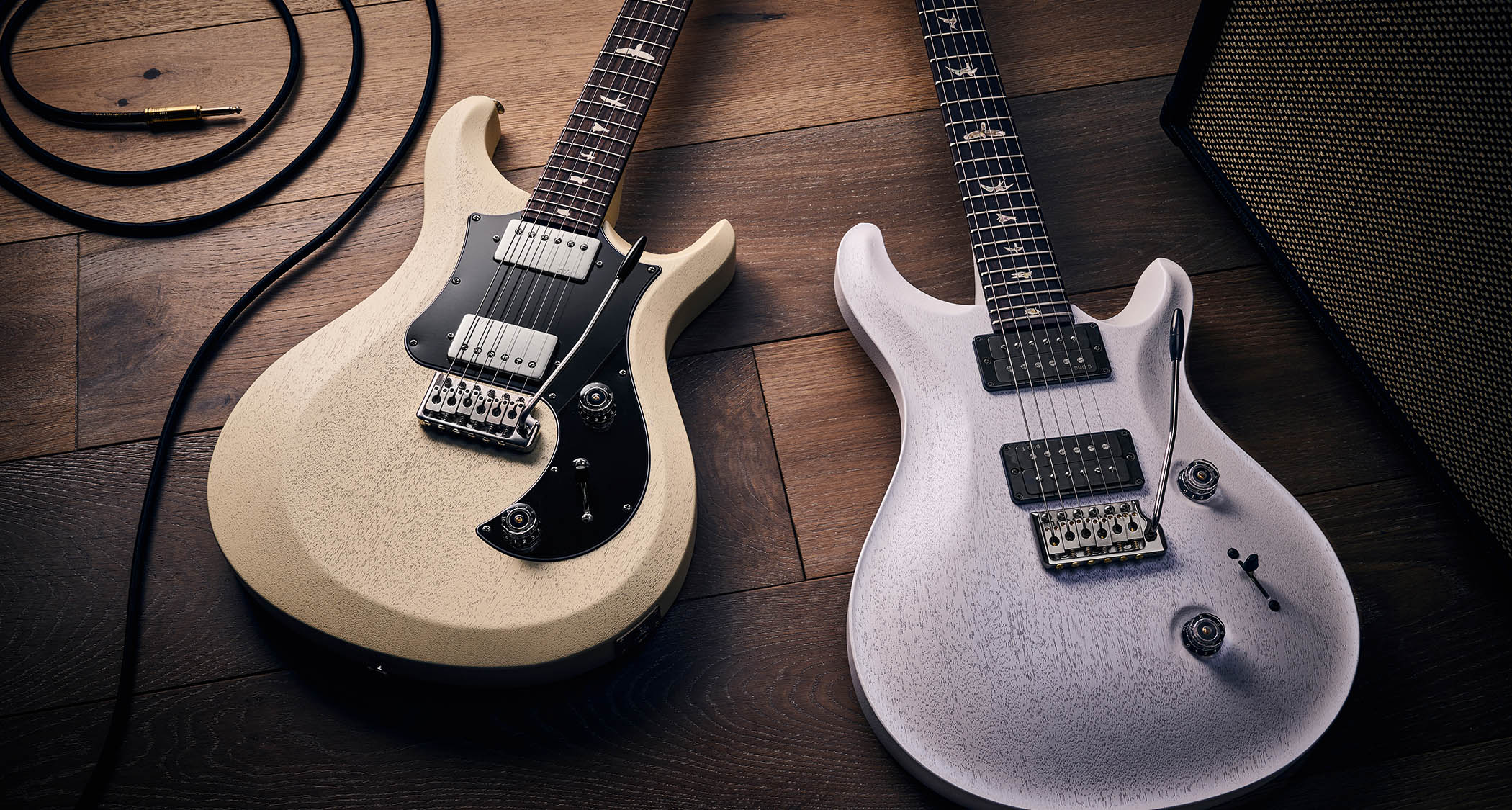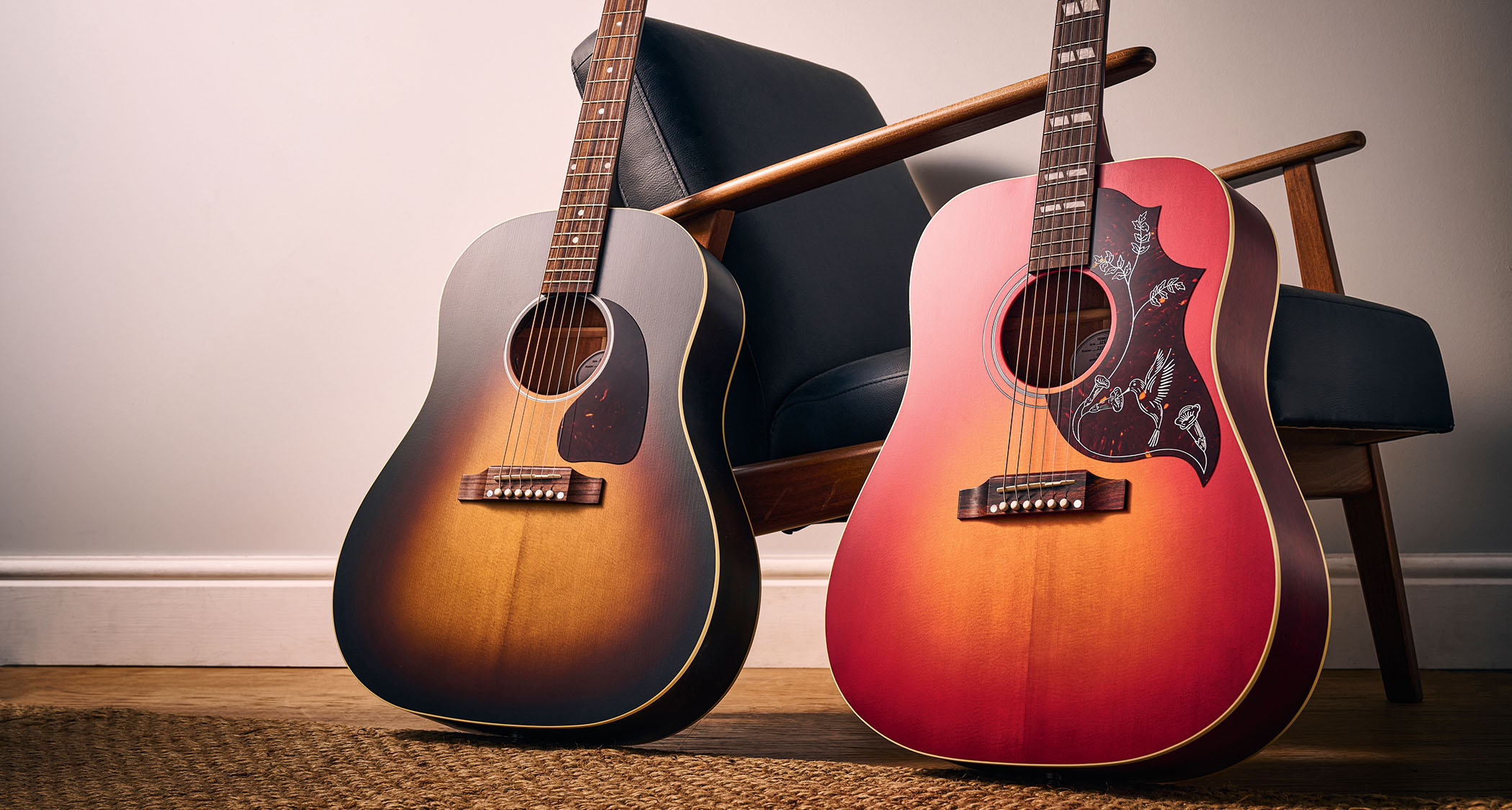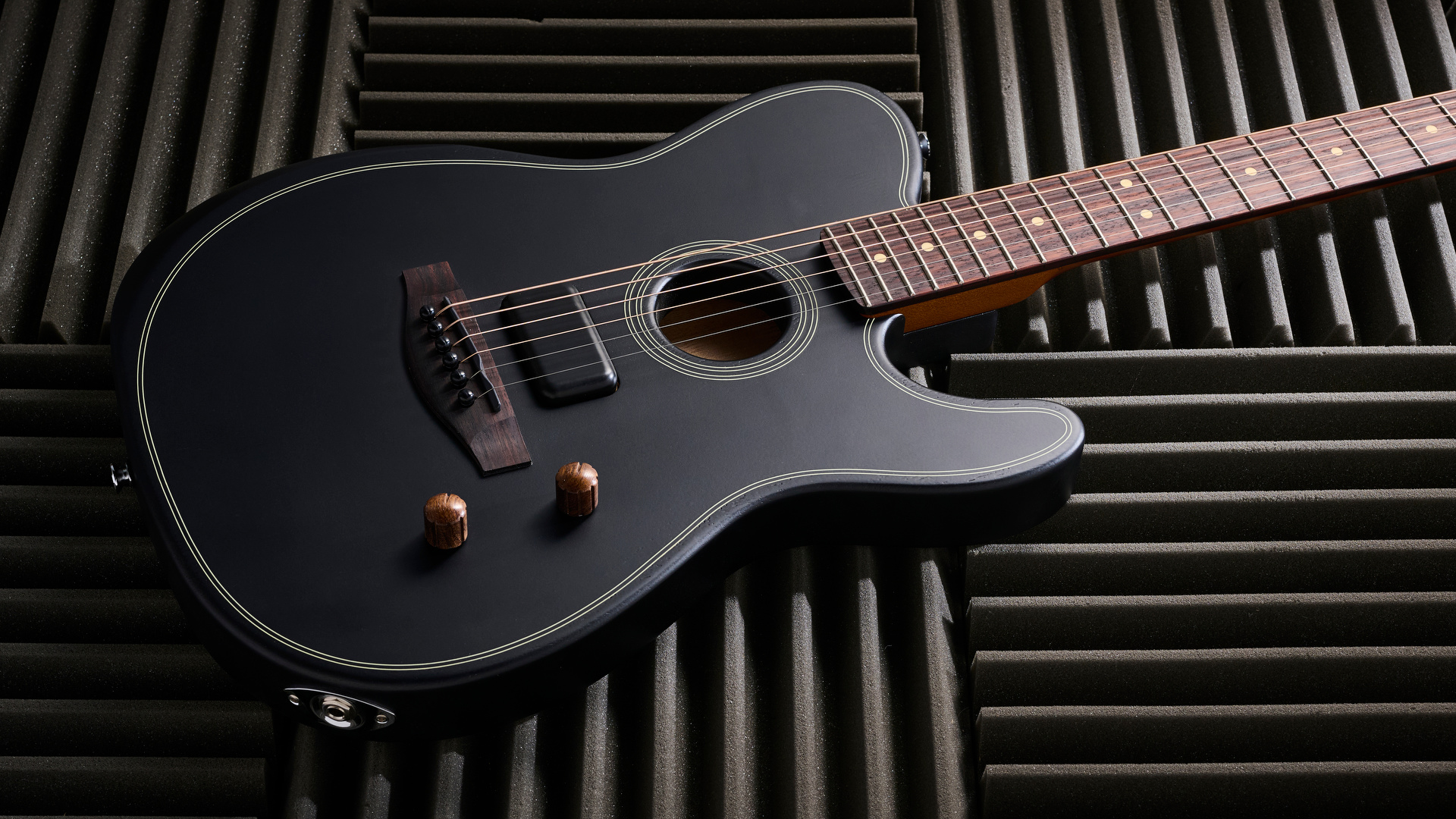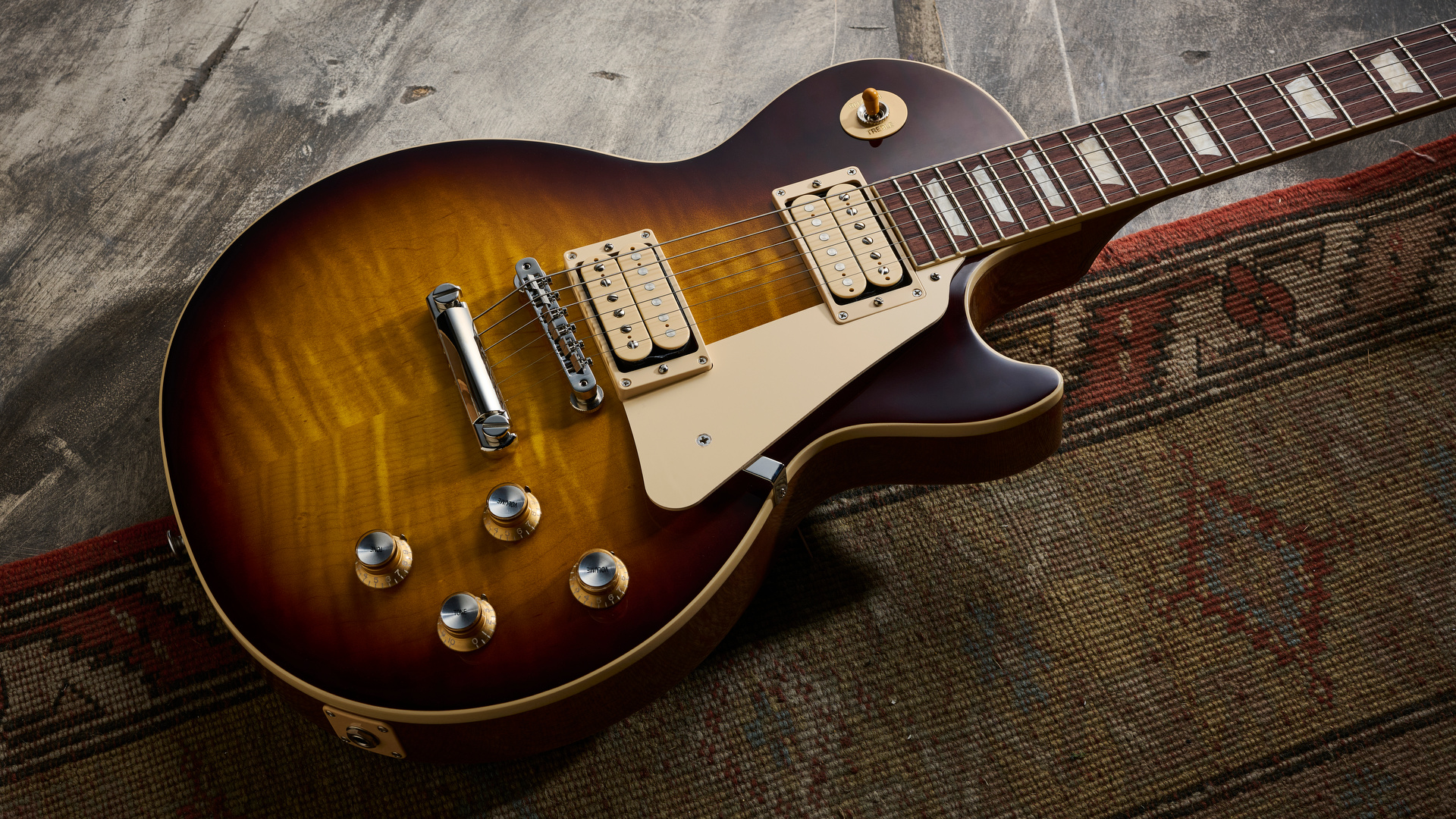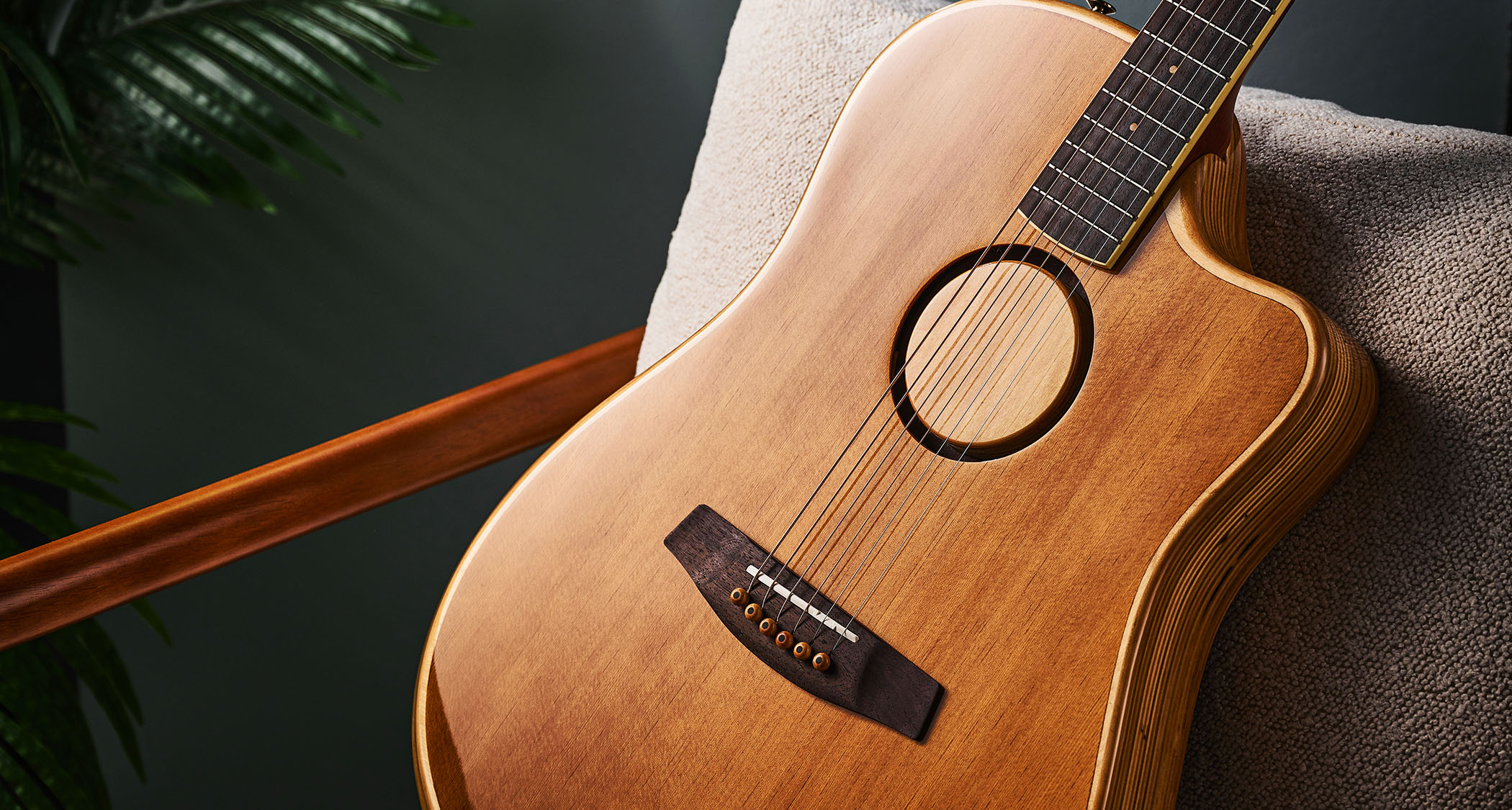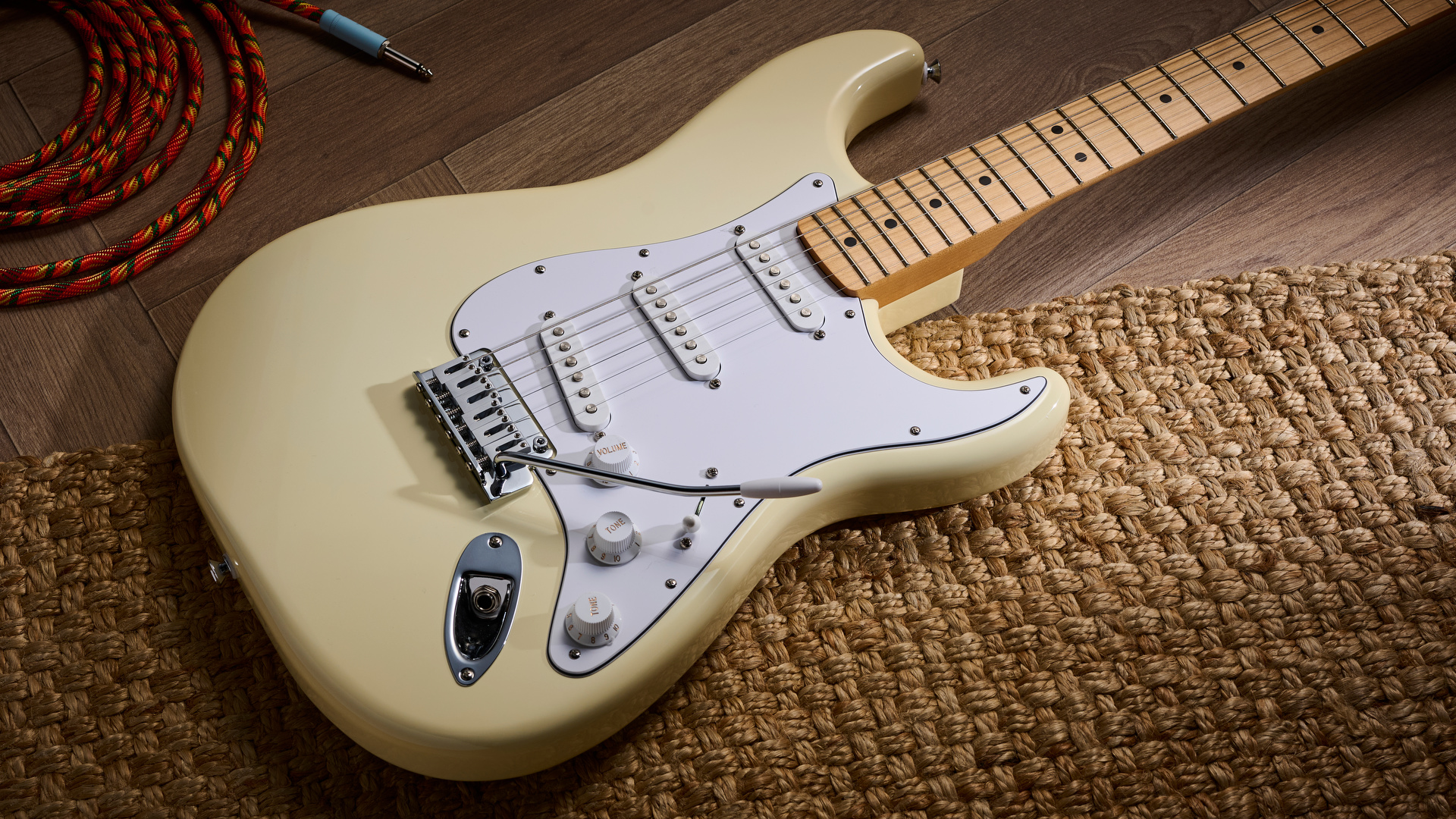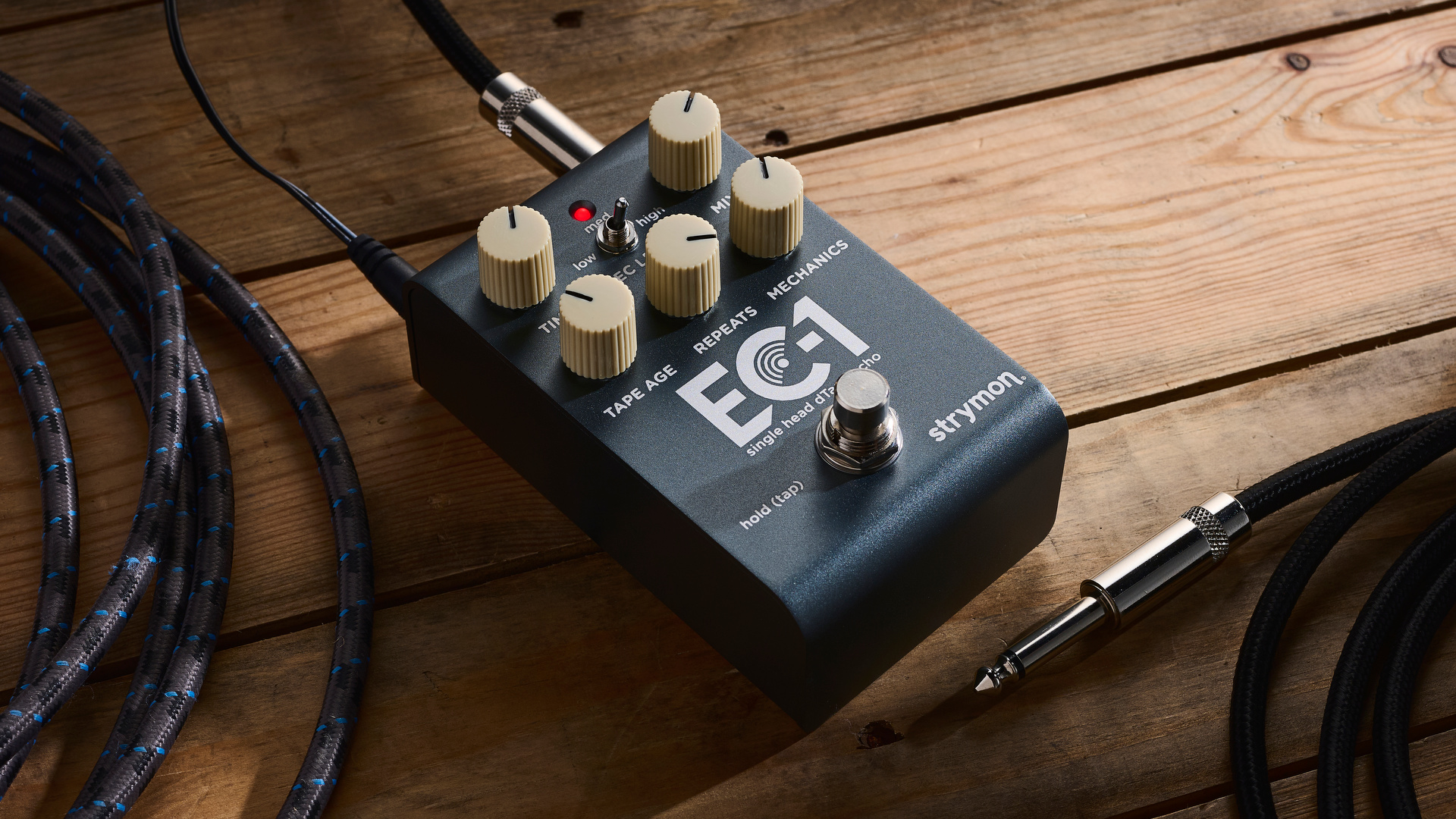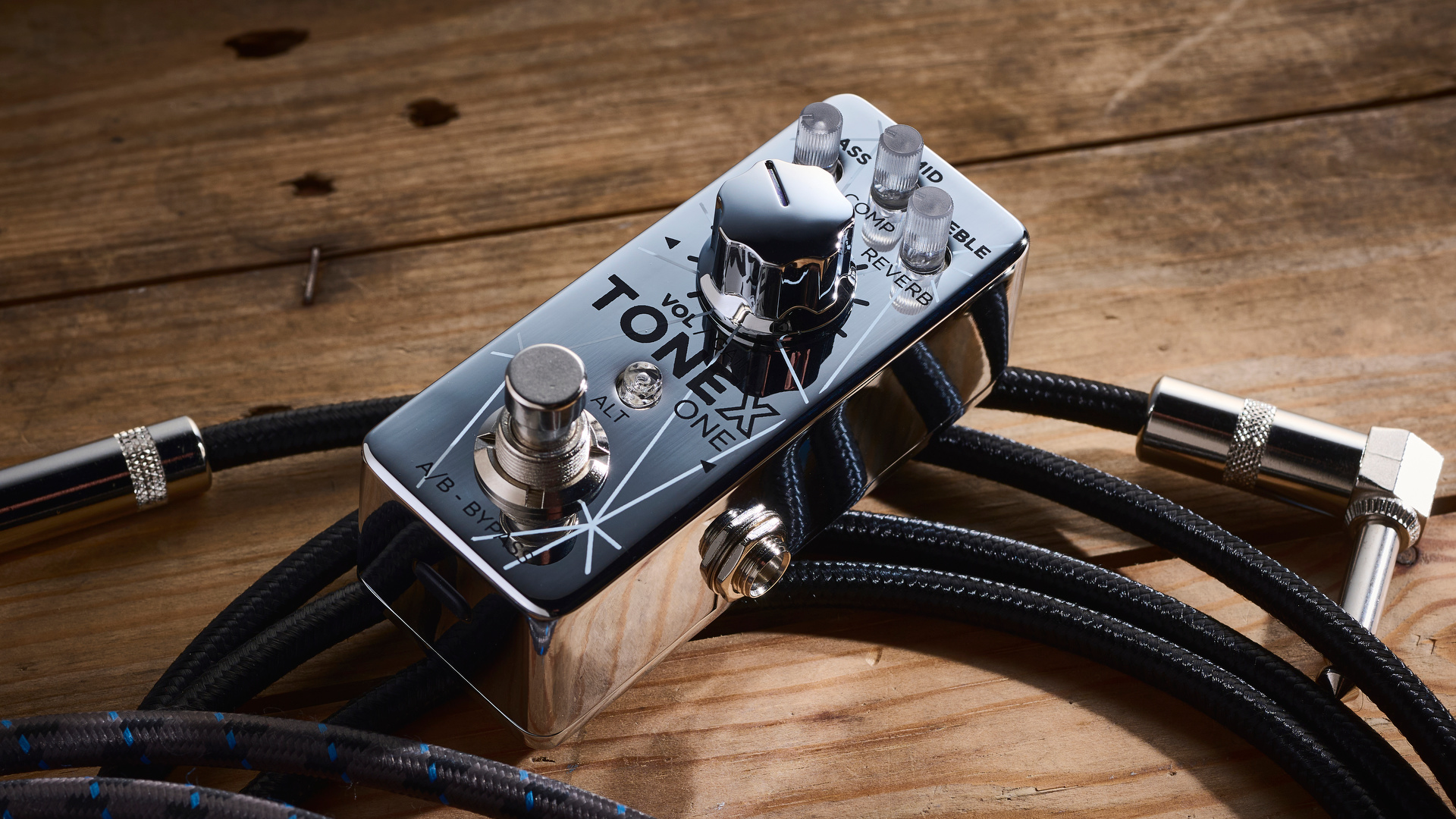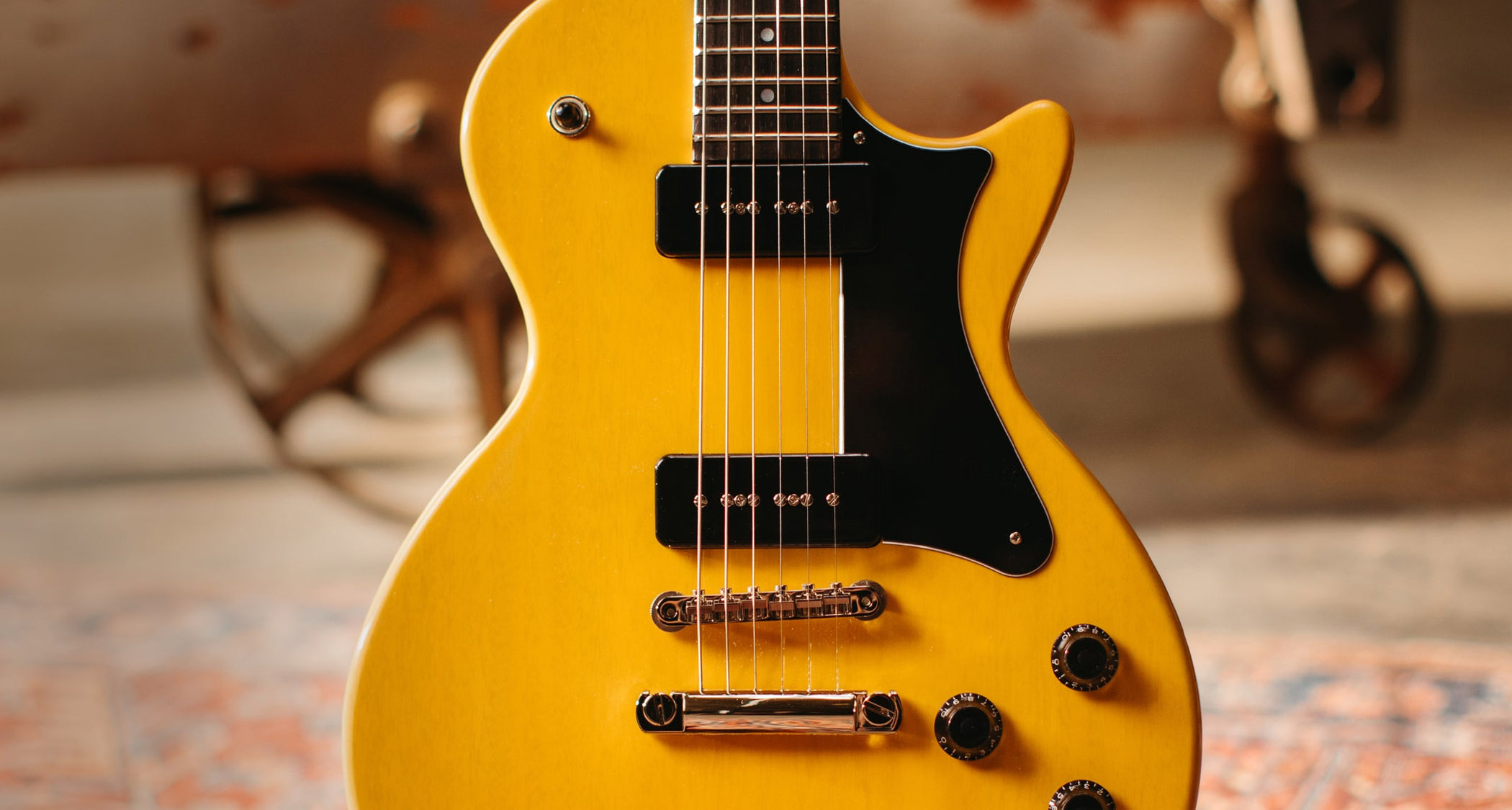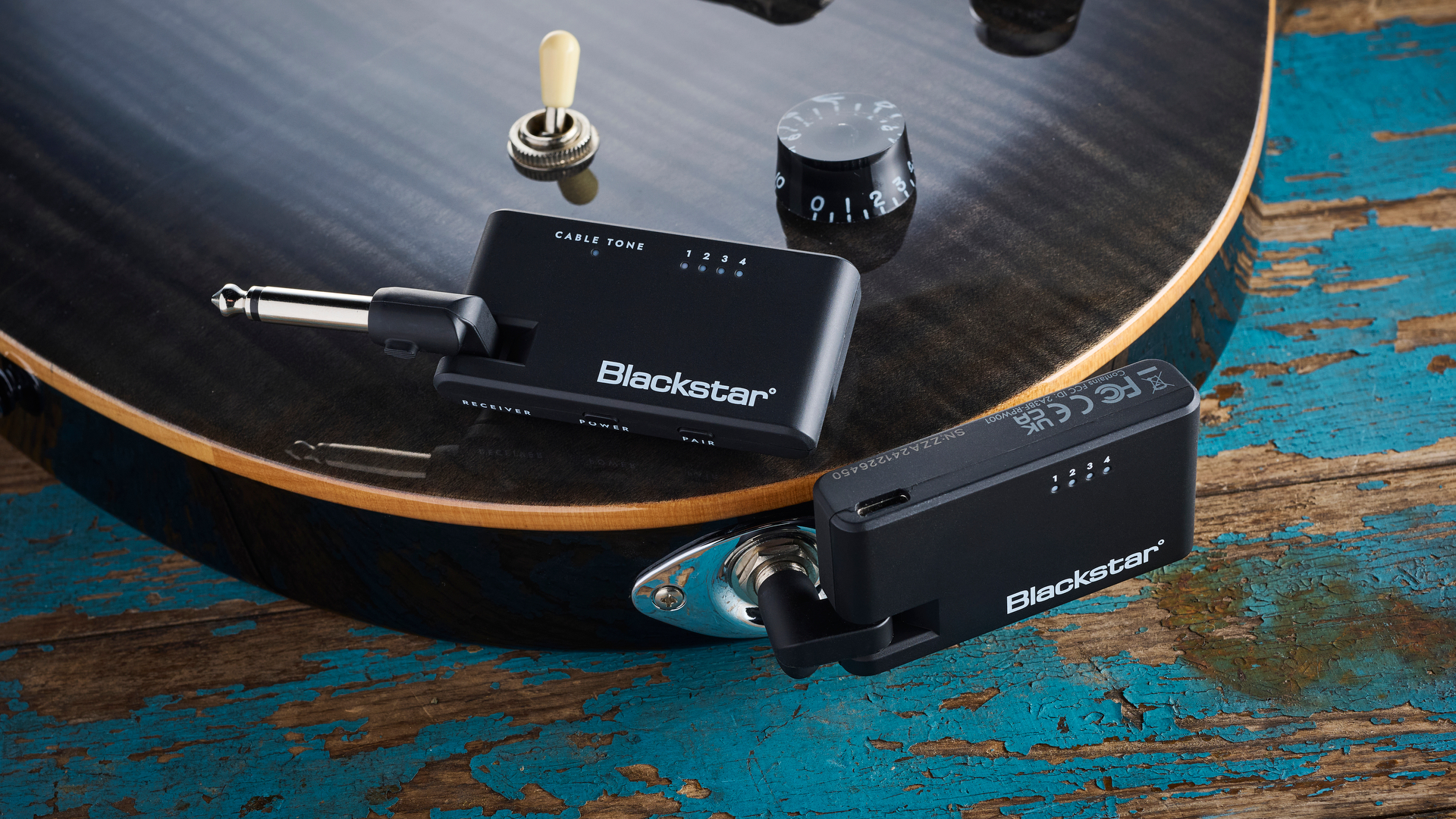Guitar World Verdict
There’s a lot more to a PRS guitar than its curly maple top and bird inlays. The fact that the brand is still tweaking and improving even the smallest details after all these years reflects its ethos: very good can always be better.
Pros
- +
Typically perfect build.
- +
Great weight feel and playability.
- +
Big-sounding but not over-hot DMO humbuckers with excellent single-coil options.
- +
With no maple top or gloss finish, it’s a great price, too.
- +
S2 might be a lower-level PRS, but the build is equally detailed.
- +
Same great weight, neck shape and playability.
- +
S2's more vintage-flavoured, brighter voicing has plenty of appeal.
Cons
- -
Standard 24 Satin perhaps not the guitar for the vintage stylist.
You can trust Guitar World
What is it?
Think PRS and you probably see a curly maple-topped Custom: an absolute modern classic and the guitar that built the empire. But the Standard is also 40 years old, the original ‘PRS guitar’ as it was called until it became the Standard in 1987, with the only major difference being its all-mahogany body.
Historically, the Standard has always been the less-expensive ‘blue collar’ option. But it’s also been absent from PRS’s Core range for over 15 years. It last appeared as the Standard 24 (or 22) Satin in the 2008 line-up and was gone the following year.
Take a quick glance at today’s Standard 24 Satin and you might ask, ‘What’s changed over 40 years?’ Pretty much everything.
That now-classic outline can’t be anything else but PRS, although the machinery used to make it today is a lot more sophisticated than the bandsaws, planers and Dupli Carver (which created the carved top back in the day) used in PRS’s original Virginia Avenue factory.
It also retains the original halfway-between-Fender-and-Gibson 635mm (25-inch) scale length and 254mm (10-inch) fingerboard radius.
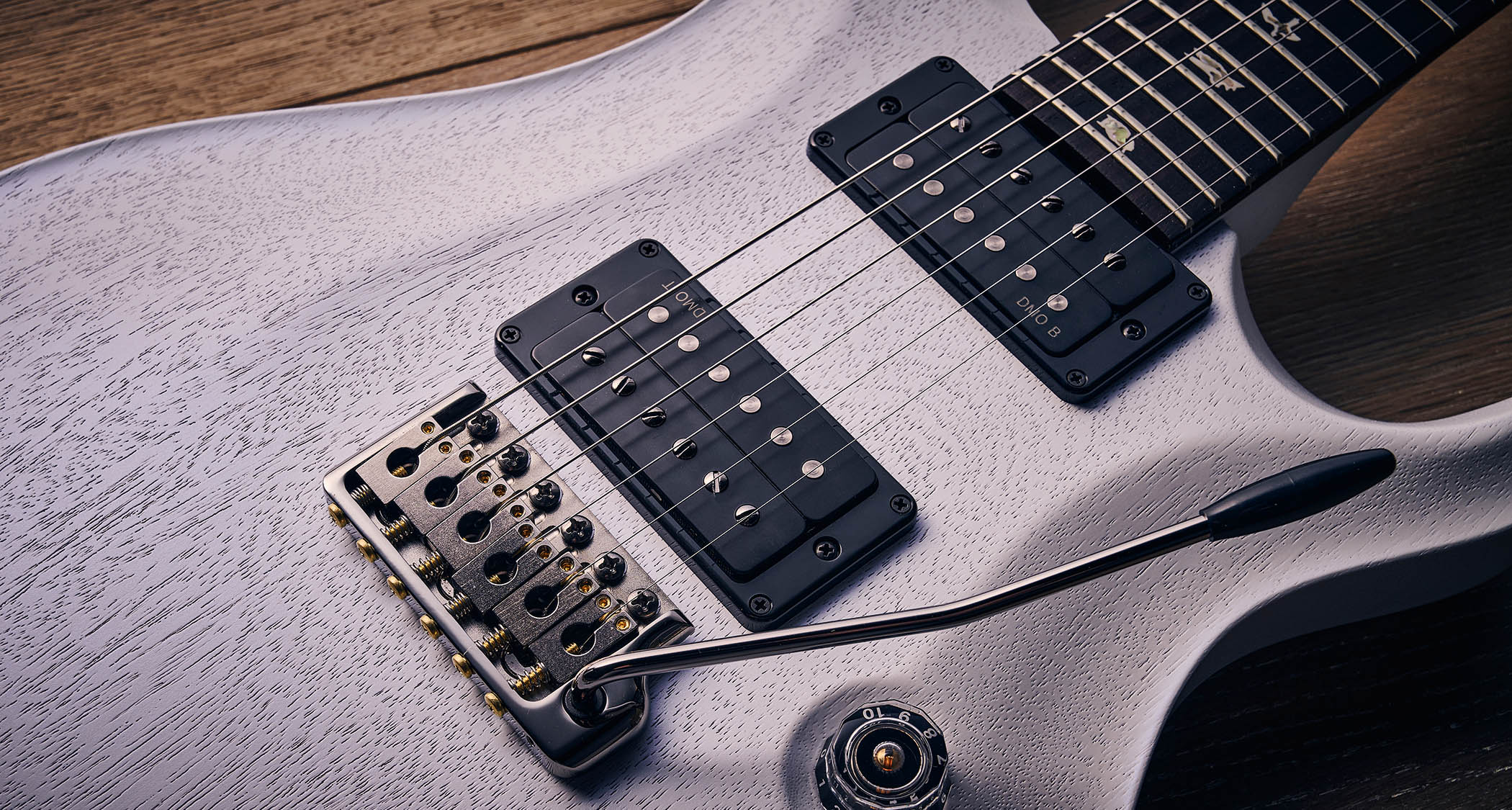
Without the eye-catching maple fascia, a solid colour such as our Pearl White example – a proper pearl that subtly changes shade in different lights – lets you really appreciate the complexity of the top carve with its dished violin-like outer carve, the chamfering to the upper horn and the hallmark deep cut-out to the treble horn.
While later guitars, from the early 90s McCarty Model, use a slightly thicker body, today’s Custom 24 and this Standard stick with the original 49mm depth, more feline Fender Stratocaster than ol’ porky Les Paul
The top edge has a very small, almost sharp rim. The back’s edges are more rounded, and save for a subtle ribcage contour it’s flat. Both controls sit in small carved dishes, and the overall craft is perfect, including the finishing with its open-pore – or ‘sinky’, in PRS speak – satin nitro. As ever, the mahogany body is one-piece stock.
While later guitars, from the early ’90s McCarty Model, use a slightly thicker body, today’s Custom 24 and this Standard stick with the original 49mm depth, more feline Fender Stratocaster than ol’ porky Les Paul.
The full-width glued-in neck has an extended foot that sits under the neck pickup, and it’s probably changed less than other details, not least the material quality and condition and the way it’s made. Stability is everything; it’s proper craft and always has been.
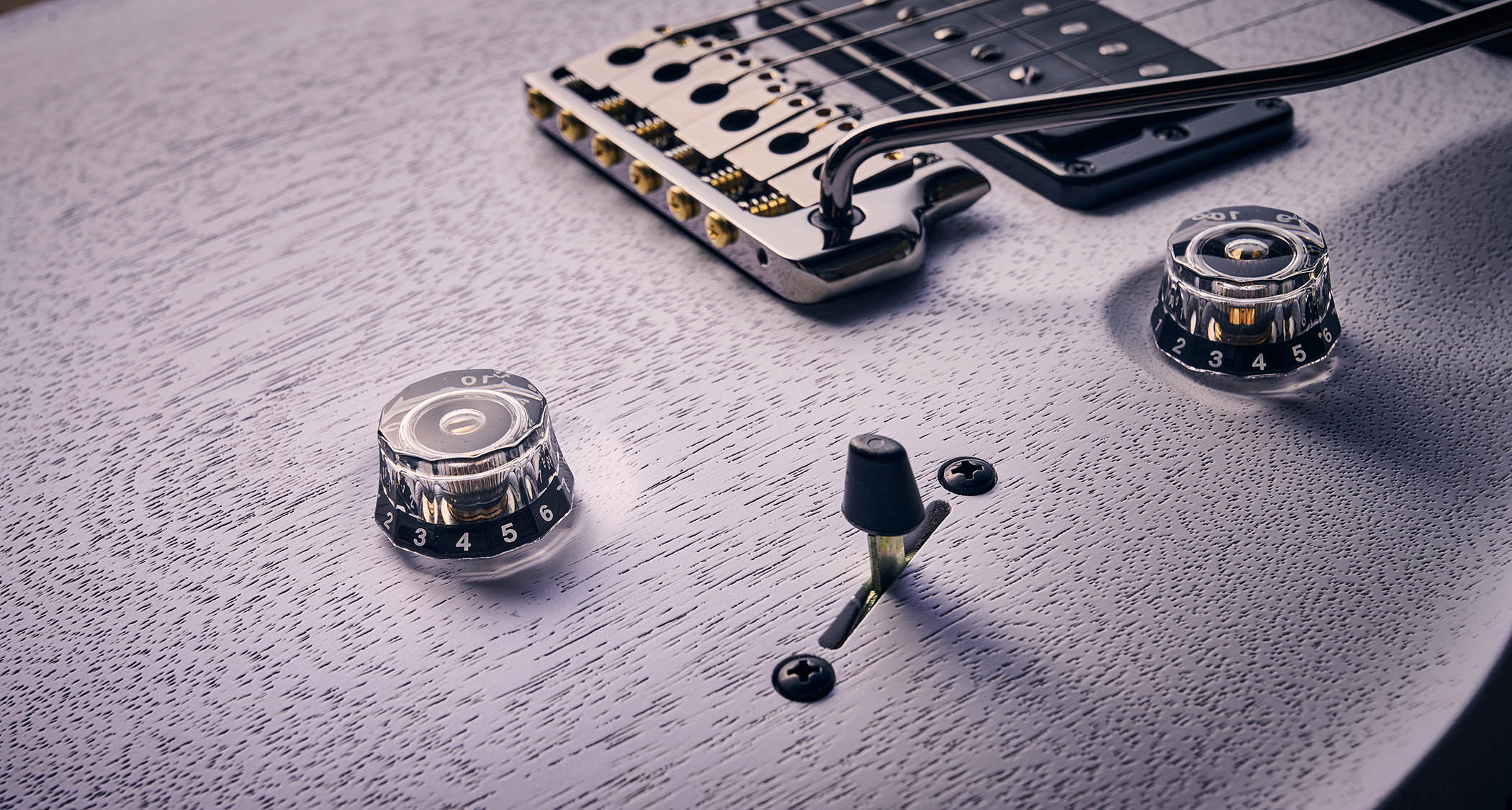
Originally, as here, the Standard and Custom’s fingerboards were unbound. The rosewood might no longer be Brazilian, but the East Indian variety here has a deep, dark almost black colour that shows off the bird inlays perfectly; they look a lot crisper now and have green abalone centres – about the only bit of bling on the whole guitar.
A first glance, it’s hard to see what’s changed with the vibrato, too. Based on a Fender vibrato with its all-brass construction, walled top plate and block saddles, the overall style is similar to the original design (which was patented in 1984) and it has been constantly refined to this Gen III level with its larger brass pivot screws – to “maximise the transfer of the strings’ vibration through the bridge and into the body of the guitar”, states PRS – and grooves under the height-adjustment screws to provide better saddle-to-bridge contact.
Subtle refinements to eke every drop of vibrational transfer. It pivots on those notched screws and sits parallel to the top using four springs.
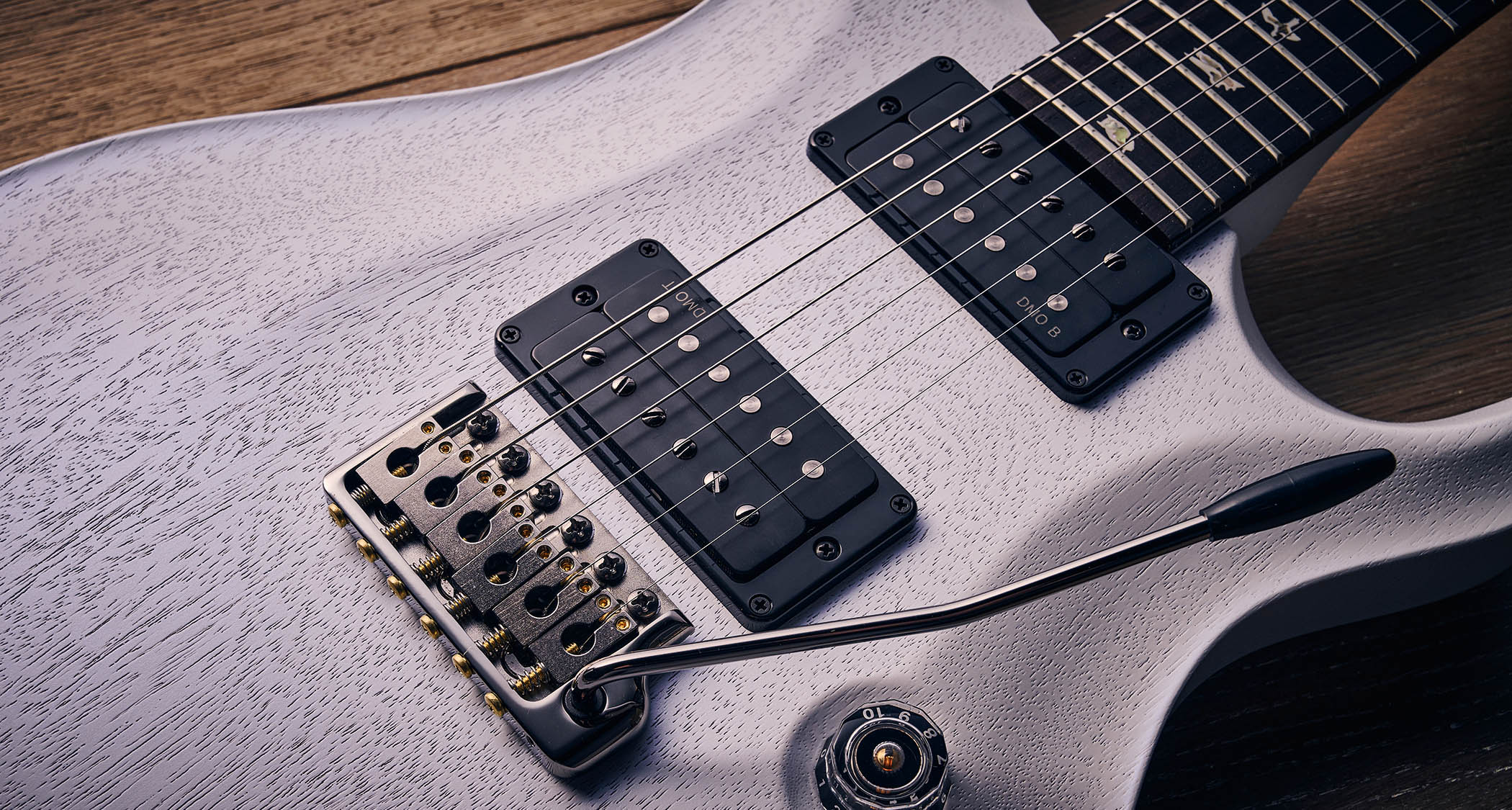
At the other end we have the latest Phase III tuners – open backs, unplated brass posts, top locks – and they now feature these larger ‘wing’ buttons, which are a black synthetic to tie in with the smoked black plating. Even the nut material has evolved into the clearly brass-infused low‑friction synthetic currently used.
Along with the 2025 Custom 24 and Custom 24 Piezo, the Standard also introduces the latest PRS uncovered humbuckers, the DMO Treble and Bass.
These adopt the proprietary square-bobbin style and mounting rings, and you realise that every visible part – the black lampshade knobs, the switch tip, the strap buttons, not to mention the tuners and bridge – are all proprietary to PRS.
S2 Standard 24 Satin
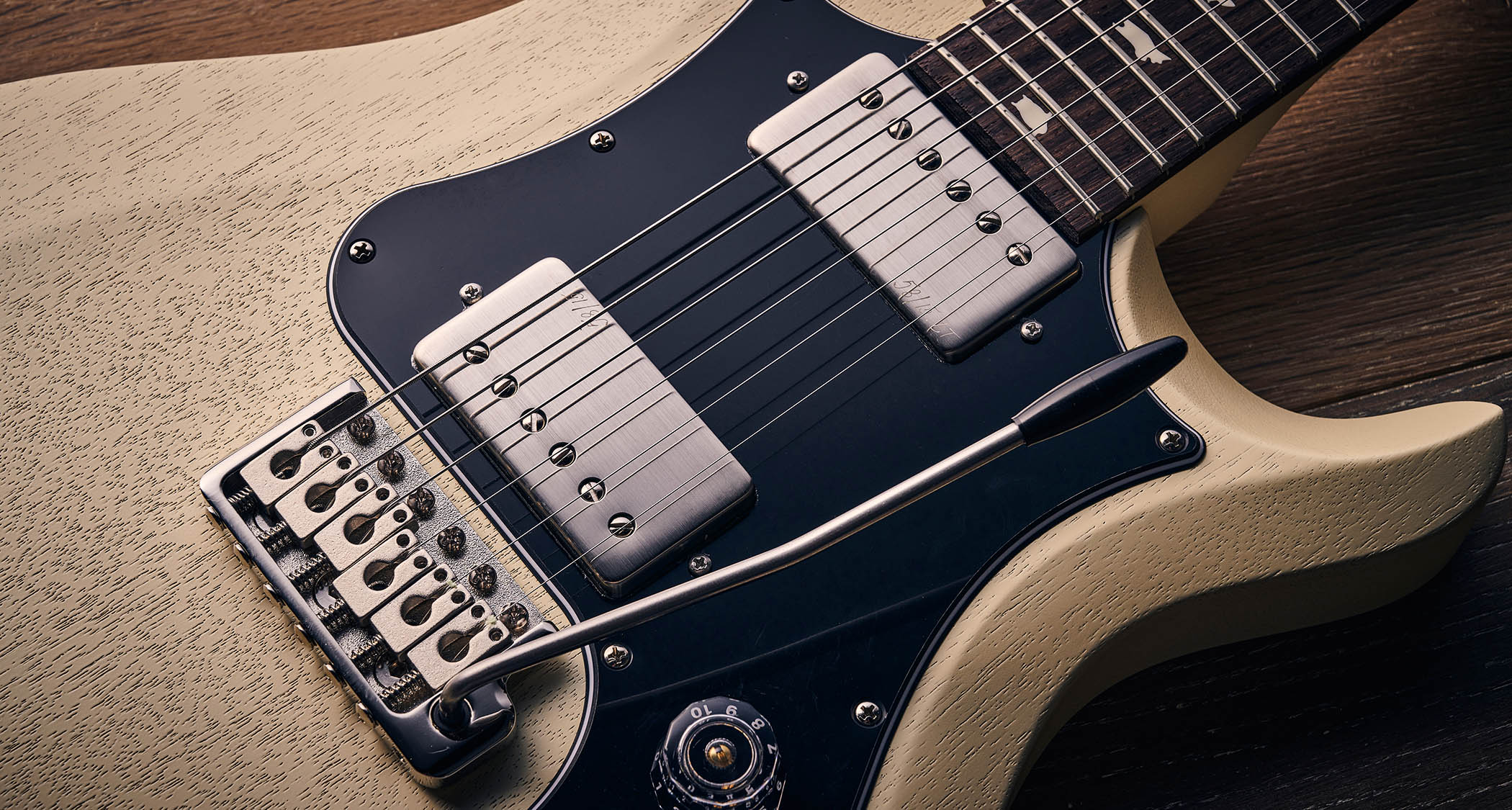
Launched for 2014, the S2 line was designed to sit midway between the high-level USA Core guitars and the much more affordable offshore-made SE line.
It’s been the made-in-the-USA home for the Standard ever since it was released as a trio of S2 models for 2016: the S2 Standard 22 Satin, S2 Standard 24 Satin and the S2 Singlecut Satin, each offered in Charcoal, McCarty Tobacco, Vintage Cherry and Vintage Mahogany satin nitro finishes.
Although still made in the PRS factory, the S2 designs employ a simplified, faster production process with chamfered top bodies, three-piece necks and, originally, electronics and hardware from the SE line. As a result, the S2 was a far less expensive USA-made PRS. And that’s still true today.
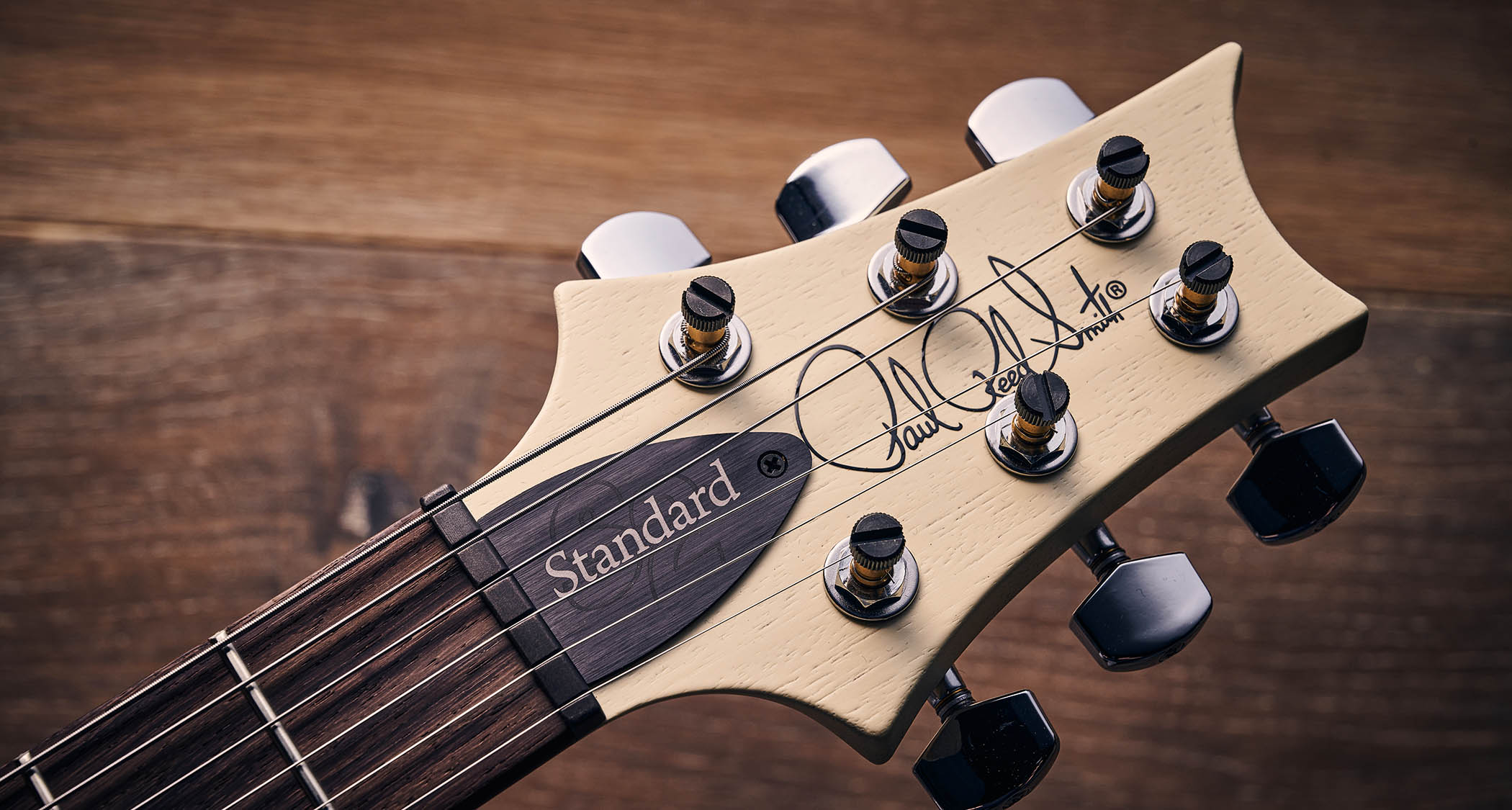
The S2 Standard 24 Satin now costs $1,750/£1,450 less than the new Core Standard, although it comes with a very good gigbag, rather than the new ATA hardshell moulded case of the Core model.
But while the basic style and construction hasn’t changed, the S2 models were upgraded last year with USA-made pickups and electrics, and this year we get the new wing-button tuners and new open-pore colours – Mavis Mint Metallic, Metallic Midnight, Pearl White and Red Apple Metallic.
As we said, our sample is from 2024, but PRS’s engineering department has confirmed that, finish and tuners aside, there are no other changes for this year.
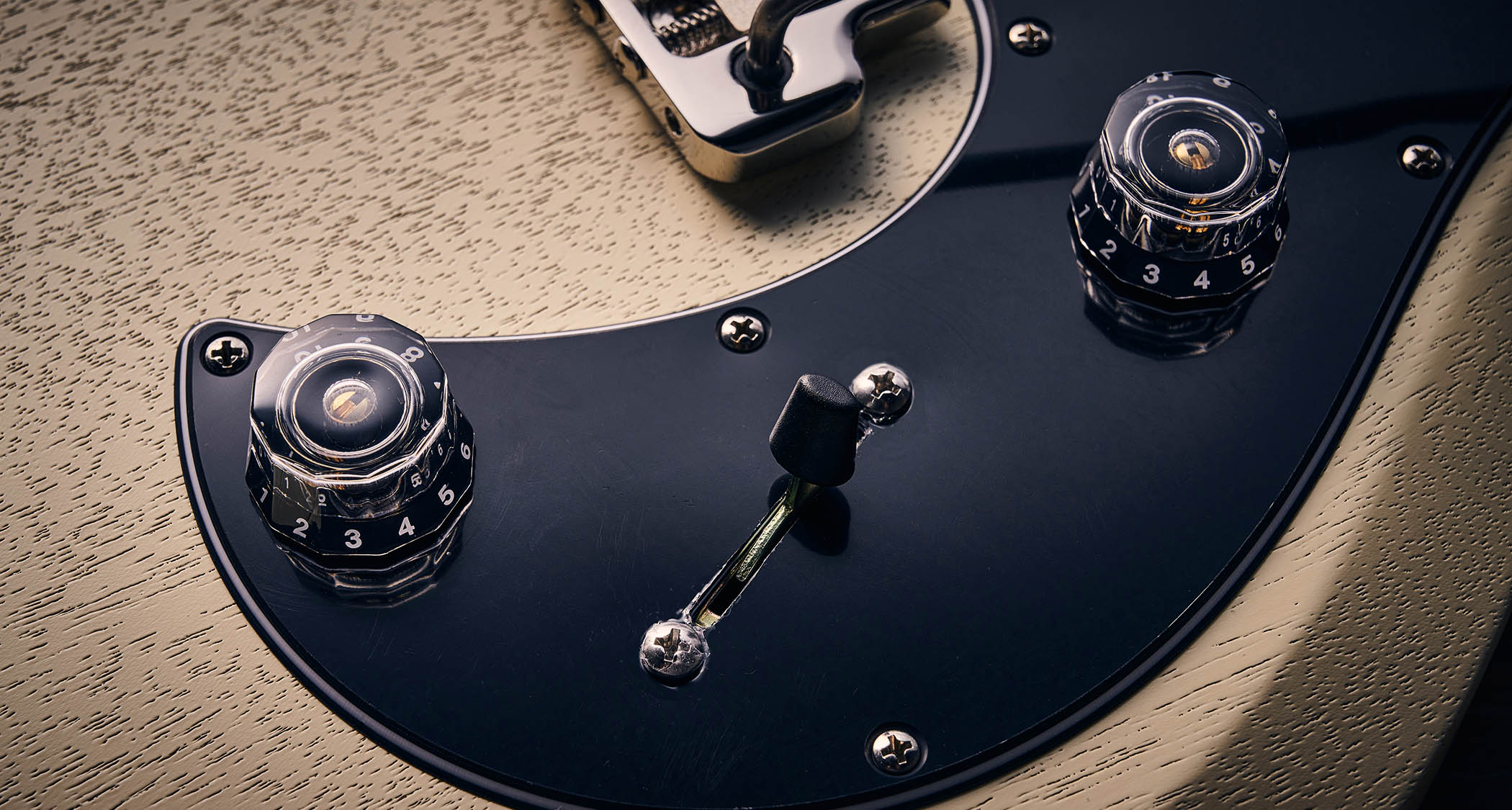
So we get the slightly thinner-depth body (45mm), which still appears to be one-piece with chamfered edges, what PRS calls an ‘asymmetric bevel’ top carve.
Under these opaque finishes you can’t see the headstock splice or the heel stack of the neck, but how the neck glues in is in a similar fashion to the Core model. Again, the dark rosewood fingerboard is unbound, the bird inlays are solid “vintage ivory acrylic”, and by design there’s a very Standard-like pared back aesthetic.
The major visual difference here is the scratchplate, which holds the brushed nickel-covered 58/15 LT pickups and the controls that function in the same way as the Core Standard, while the output jack is still metal mounted on the side of the body.
The vibrato is the cast (or “molded”, as PRS prefers) steel vibrato, used not only on the SE guitars but also USA bolt-ons such as the CE.
Specs
PRS Standard 24 Satin
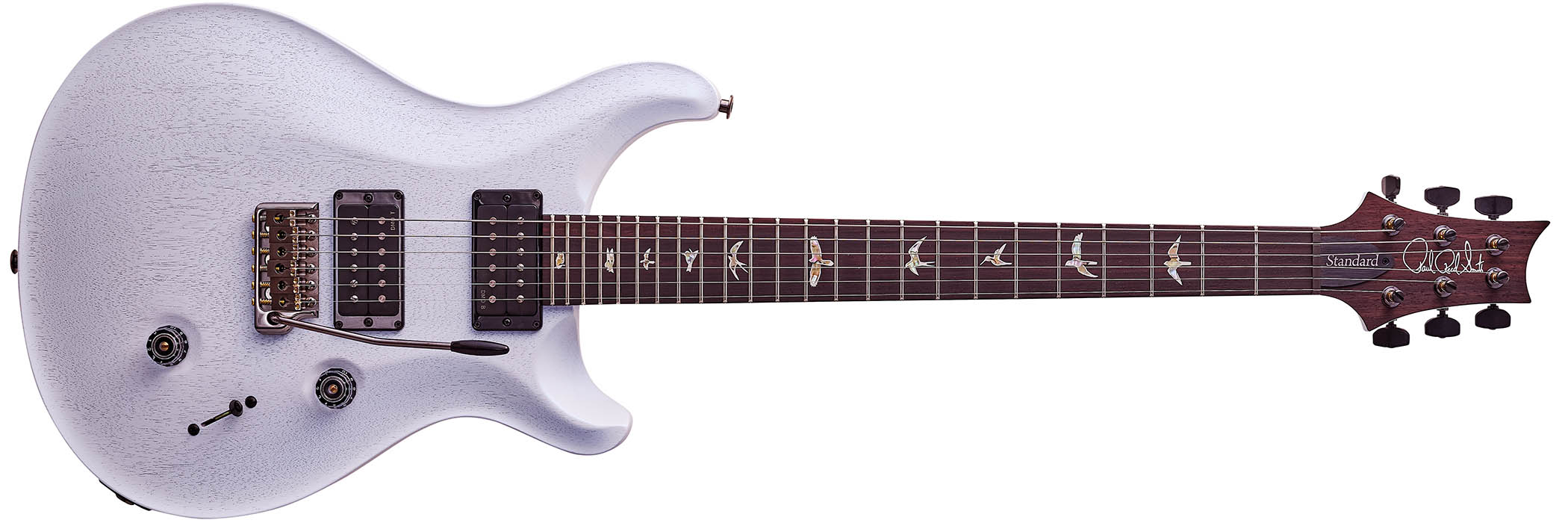
- PRICE: $3,500/£3,449 (inc case)
- ORIGIN: USA
- TYPE: Double-cutaway, carved-top solidbody electric
- BODY: 1-piece mahogany with violin top carve
- NECK: 1-piece mahogany, Pattern Thin profile, glued-in
- SCALE LENGTH: 635mm (25-inch)
- NUT/WIDTH: PRS Synthetic/42.9mm
- FINGERBOARD: East Indian rosewood, acrylic/green abalone bird inlays, 254mm (10”) radius
- FRETS: 24, medium
- HARDWARE: PRS Gen III vibrato, PRS Phase III locking tuners (w/brass posts and plastic ‘wing’ buttons) – smoked black plating
- STRING SPACING, BRIDGE: 52.5mm
- ELECTRICS: PRS DMO Treble and Bass open coil humbuckers, 5-way lever pickup selector switch, master volume and master tone
- WEIGHT (kg/lb): 3.36/7.39
- OPTIONS: No
- RANGE OPTIONS: Other new satin finish models include NF53 Satin (£2,999) and Fiore Satin (£2,779) along with JM Silver Sky Satin (£3,300)
- LEFT-HANDERS: No
- FINISHES: Pearl White (as reviewed), Frost Blue Metallic, Pearl Black, Red Apple Metallic – ‘sinky’ satin nitrocellulose
- CONTACT: PRS Guitars
PRS S2 Standard 24 Satin
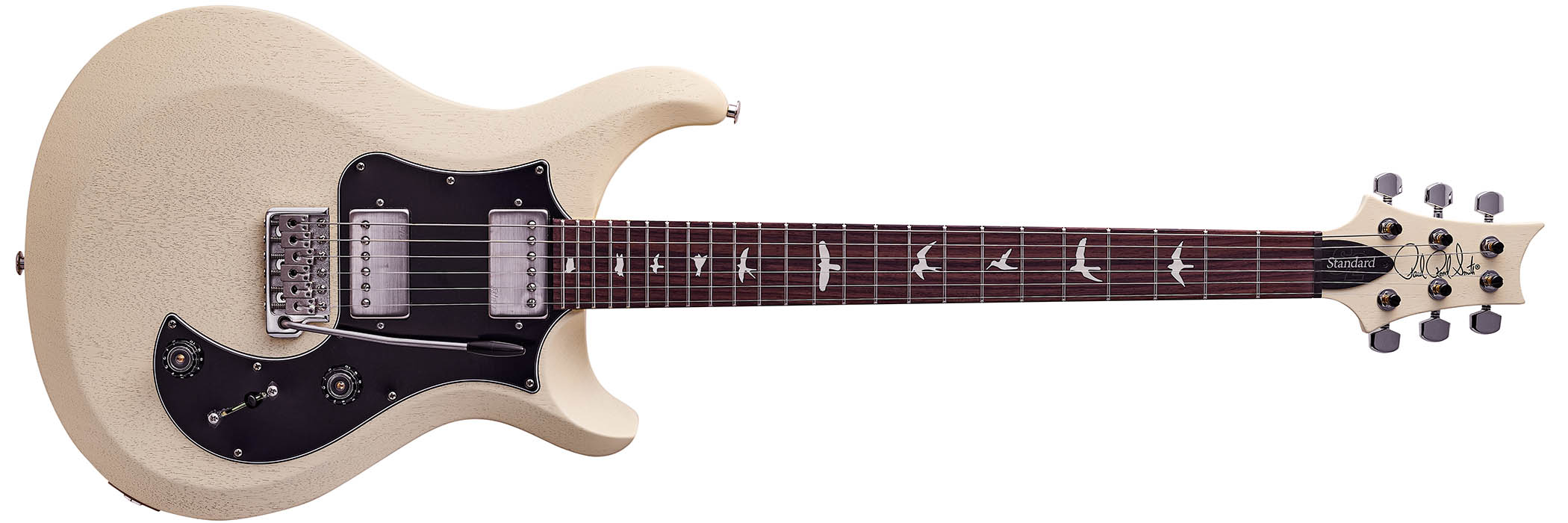
- PRICE: $1,749/£1,999 (inc gigbag)
- ORIGIN: USA
- TYPE: Double-cutaway solidbody electric
- BODY: Mahogany with ‘asymmetric bevel’ top carve
- NECK: Mahogany, Pattern Thin profile, glued-in
- SCALE LENGTH: 635mm (25”)
- NUT/WIDTH: Friction reducing/43.2mm
- FINGERBOARD: East Indian rosewood, ‘old school’ bird inlays, 254mm (10”) radius
- FRETS: 24, medium
- HARDWARE: PRS vibrato (cast), PRS Phase III locking tuners (w/brass posts and plastic ‘wing’ buttons) – nickel plating
- STRING SPACING, BRIDGE: 52.5mm
- ELECTRICS: PRS 58/15 LT Treble and Bass humbuckers, 5-way lever pickup selector switch, master volume and tone
- WEIGHT (kg/lb): 3.41/7.5
- OPTIONS: No
- RANGE OPTIONS: The 22-fret Standard Satin (same price) plus 22- and 24-fret S2 Standards are available with gloss finishes at $1,999/£2,135
- LEFT-HANDERS: No
- FINISHES: Antique White (as reviewed). New 2025 colours are Red Apple Metallic, Mavis Mint Metallic, Metallic Midnight, Pearl White – ‘sinky’ satin nitrocellulose
- CONTACT: PRS Guitars
Playability and sounds
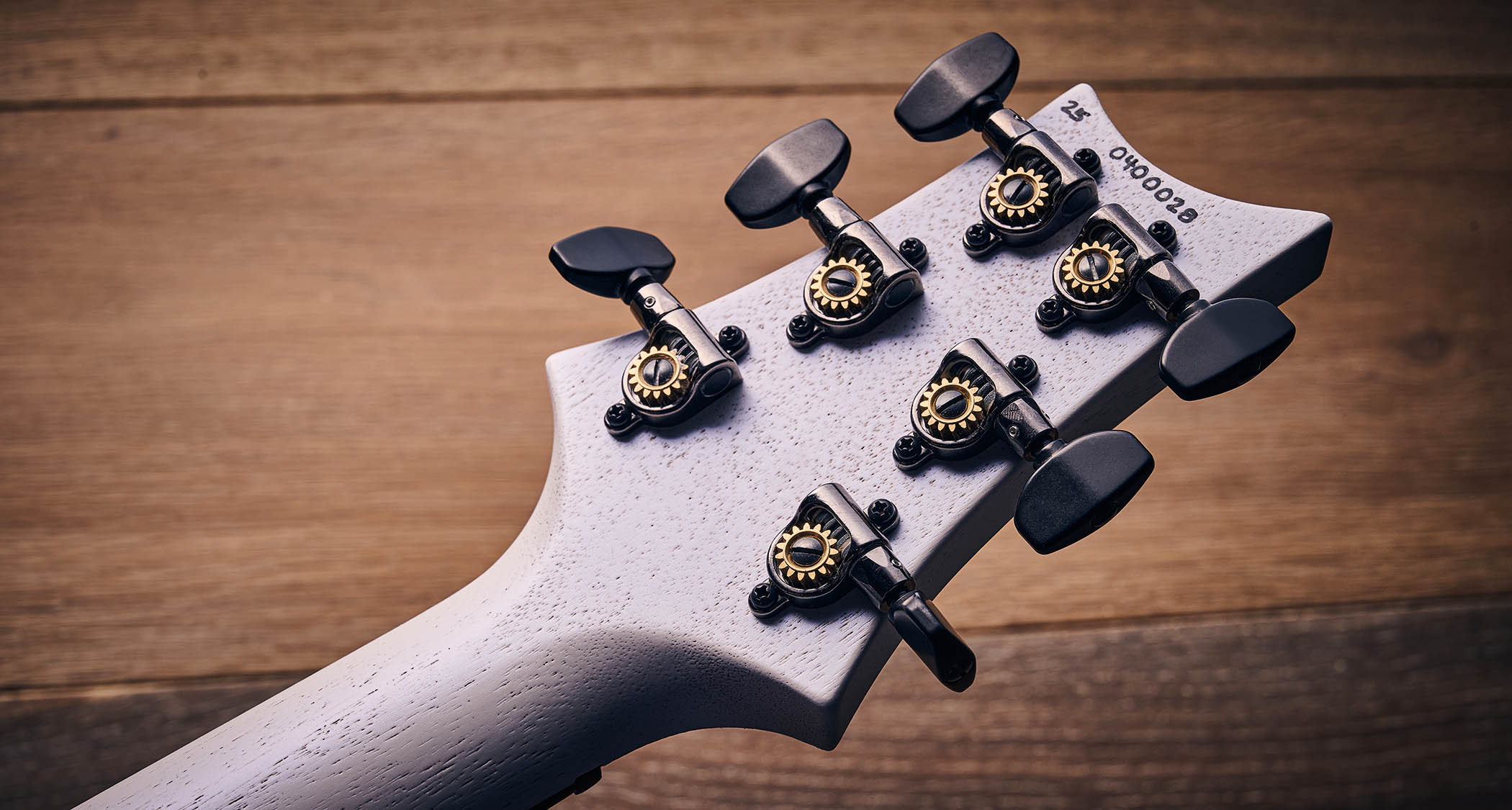
Two Standard 24s, quite different in price. Which is best? If only it were that simple… Both guitars are very similar in weight, comfortably below the 3.6kg (8lb) threshold. And both use the Pattern Thin profile (aka the Wide Thin, in old money) with near identical dimensions and feel: a classic C that’s not overwide or that thin, a very mainstream classic handful.
The nut width measures a shade under 43mm (with 36mm string spacing at the nut, 52.5mm at the bridge) with a measured 1st fret depth of 21.1mm and pretty much bang on 22.9mm by the 12th on both models.
As you’d expect, there’s very little difference in the strapped-on or seated feel, aside from that slightly thicker and more domed top of the Core model, though it does have a thinner rim depth compared with the S2. Setups are identical, as are the PRS ‘standard’ frets, approximately 2.54mm wide with the same height of 1.14mm – the definition of medium-jumbo, we’d say.
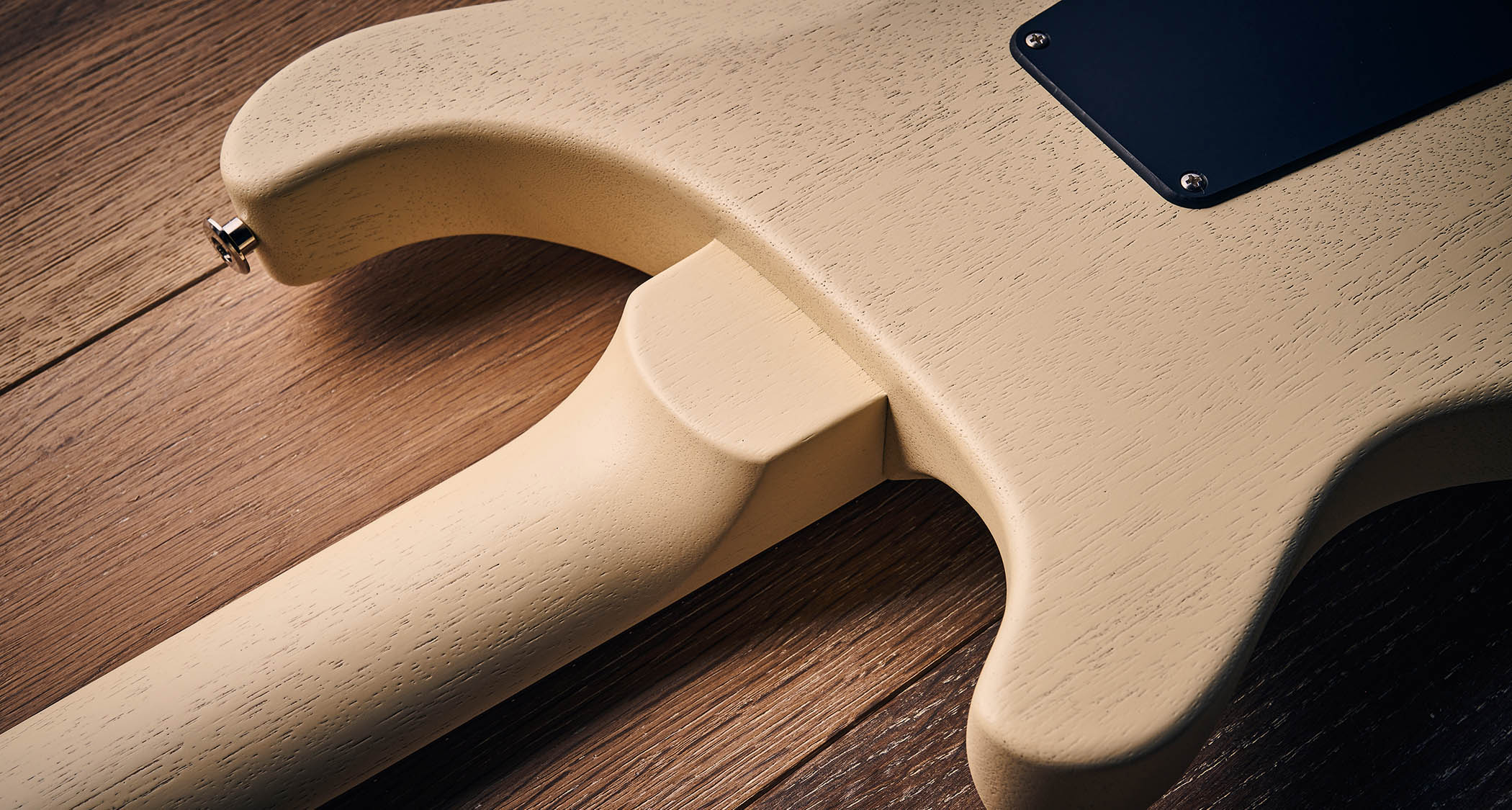
Playing between the two unplugged, the S2 has a very slightly brighter response and is a little snappier; the Core Standard is very similar but slightly more rounded.
The switching on both is the same, and while it doesn’t give you the versatility of variants such as the Custom 24-08 or the more expansive HSH Modern Eagle V, the five distinct voices here cover immense ground.
You can voice either humbucker individually, plus both together (in position 3), but the single-coil sounds are only voiced in combination: the inner single coils (position 4) and the inner single coil of the neck with the full bridge humbucker (position 2).
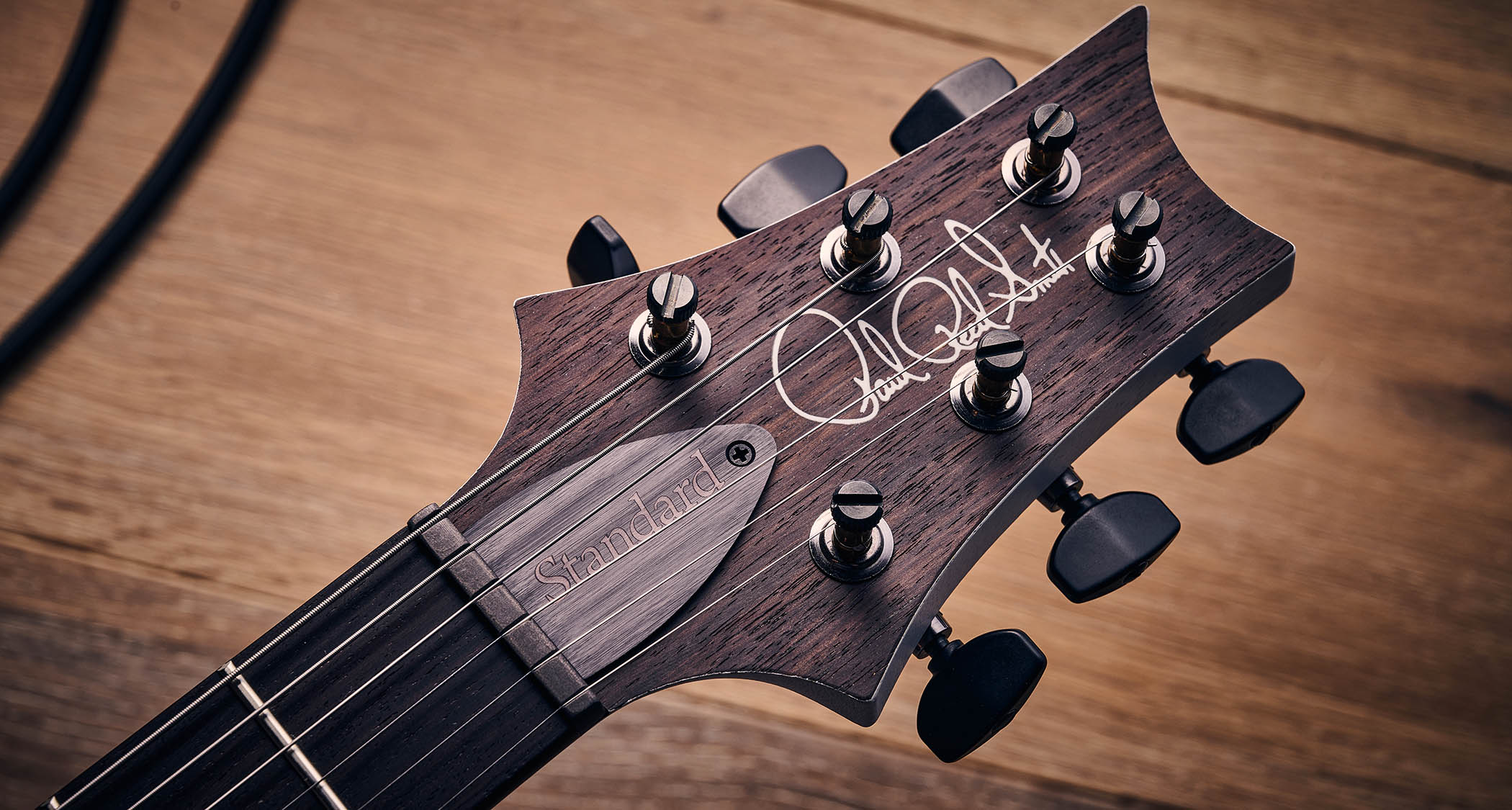
Now, along with different vibratos, the pickups are different, too, and provide sounds that have more variation to them than the feel.
We are in a similar ballpark, but the Core’s DMOs have a little more solidity, creating a subtly thicker voice that certainly sounds ‘all mahogany’ – without the addition of the maple top.
Clean, the plummy jazz at the neck is contrasted by the subtle ‘Patent Applied For’ honk at bridge – and that impression of thickness is clear to hear.

To our ears, this Core Standard’s humbuckers sit most happily with some gain from amp and pedals. It instantly sounds huge: perfect for big stadiums, real or imagined.
It’s not that these pickups are actually high output – they’re pretty regular, if we’re honest, and don’t sound overly compressed – but they certainly sound fuller in the midrange than a classic Patent Applied For style.
The subtle high-end sizzle can be lost a little when you pull back the volume, and we barely touched the tone control as there are no spiky highs to tame; full up, it’s dark enough as is.
Well, unless you want to do a Santana that is – pulling back the tone a little gets you there in an instant. All in, along with its big fat rhythm chunk, this Standard is a soloist’s dream.
The S2 doesn’t sound cheaper in the least, but it does sound different and a little more vintage-flavoured, with a touch more snap and high-end
The S2 doesn’t sound cheaper in the least, but it does sound different and a little more vintage-flavoured, with a touch more snap and high-end.
The bridge captures a more Patent Applied For character with a little more honk and brightness, and a little more clarity; it’s less ‘big’-sounding at the neck. Pulling back the volume reduces the high-end, but it sounds more usable, especially with cleaner, lighter crunch tones.
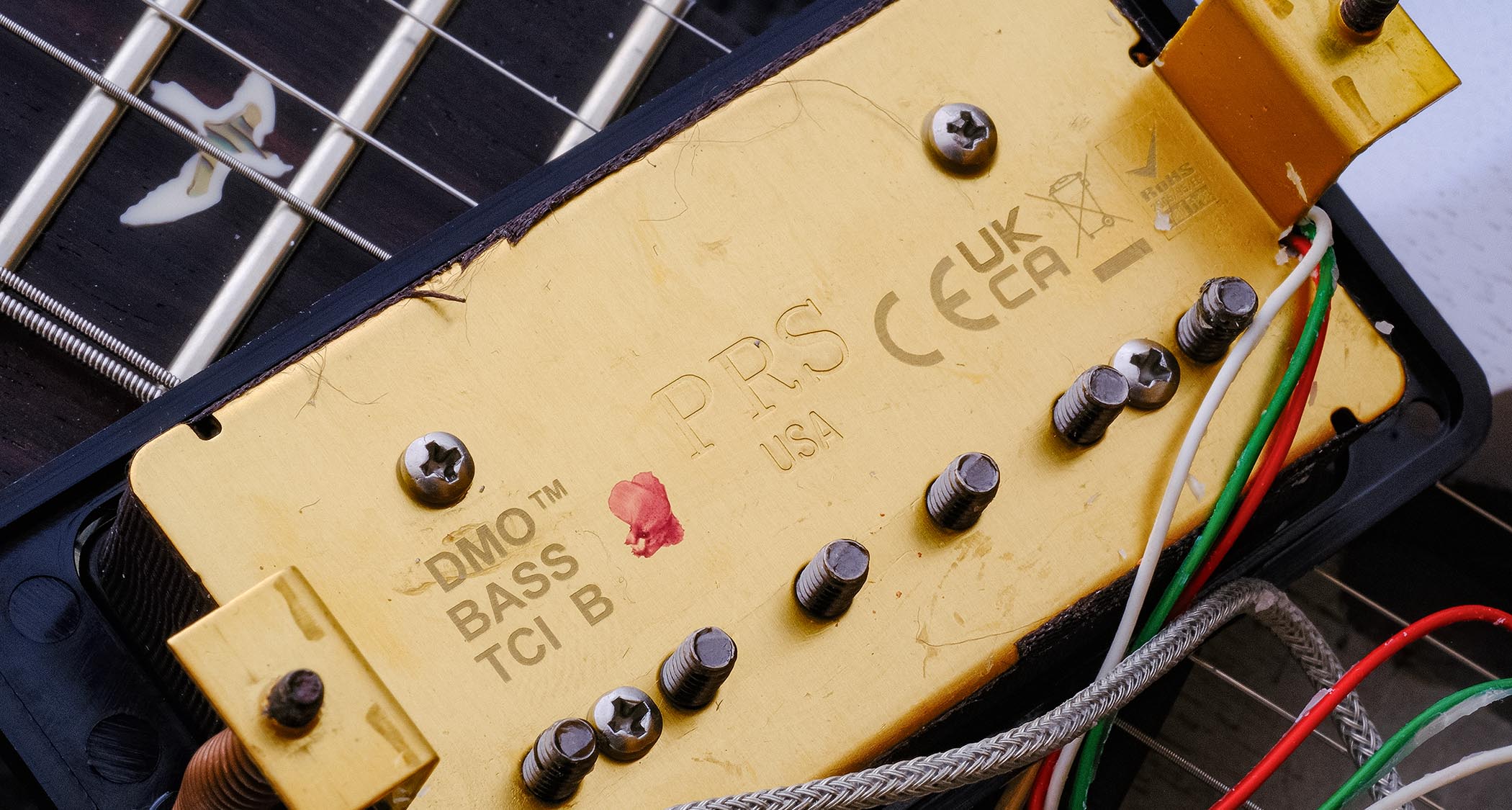
The two single-coil mixes provide some welcome Fender-like brightness to counter the pretty thick-sounding ’buckers of the Core Standard. They’re a great contrast to the DMOs in humbucking mode.
They’re a little thinner and brighter on the S2 and lean more towards that Fender-y snap and brightness. The sounds we used less on both are the twin humbuckers combined – they lack some bounce and sparkle when compared with our reference Burstbucker-equipped Les Paul Classic.
As players, there is very little difference between the two. Both are simply very finely tuned instruments with effortless playability, they’re superbly stable and in tune, and have quite simply one of the best vibratos there is.
Verdict
Verdict: ★★★★½
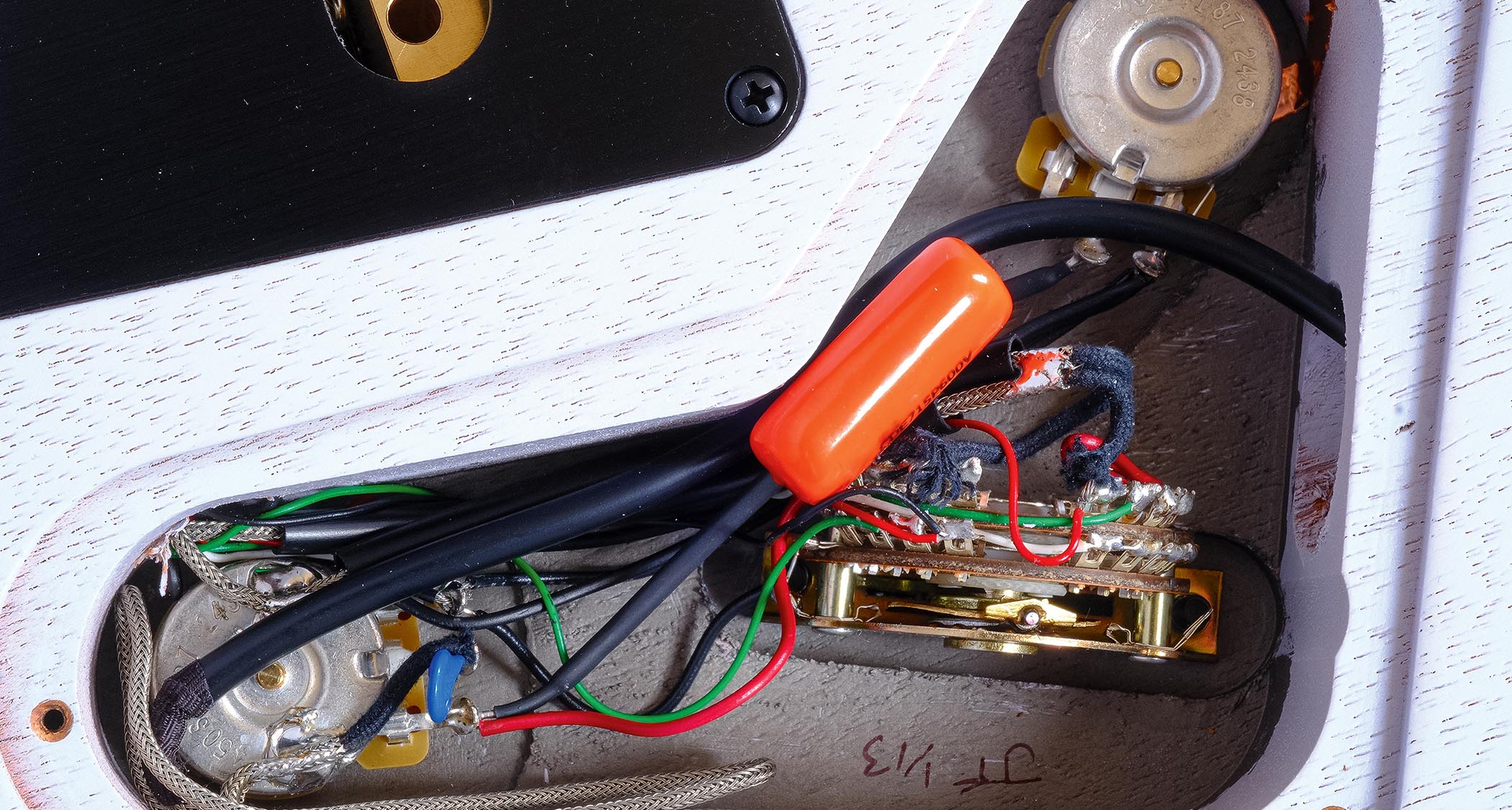
It’s a bit of a surprise that PRS hasn’t given this new Core Standard a 40th Anniversary shout out – it really is the guitar (along with the Custom, of course) that started the party all those years ago.
It’s grown up a bit and has a big, muscular voice but just enough contrast to pull back the bluster for some of the best single-coil sounds we’ve heard on this classic platform.
The S2 Standard Satin certainly doesn’t play or sound like half the guitar, and there will be plenty of players that will be drawn to its more classic voicing
The S2 Standard Satin certainly doesn’t play or sound like half the guitar, and there will be plenty of players that will be drawn to its more classic voicing and even aesthetic, courtesy of its scratchplate – especially if you use lower gains.
They’re marketed as different levels, which is reflected in the price, but in reality they’re different tools for different jobs. You could have a career with the S2, no question: it’s a thoroughly professional-grade piece.
Guitar World verdict: There’s a lot more to a PRS guitar than its curly maple top and bird inlays. The fact that the brand is still tweaking and improving even the smallest details after all these years reflects its ethos: very good can always be better.
Hands-on videos
PRS Guitars
- “While Fender players might feel more at home with the Silver Sky, PRS players will definitely feel a little more comfortable here”: PRS SE NF3 review
- This article first appeared in Guitarist. Subscribe and save.

Dave Burrluck is one of the world’s most experienced guitar journalists, who started writing back in the '80s for International Musician and Recording World, co-founded The Guitar Magazine and has been the Gear Reviews Editor of Guitarist magazine for the past two decades. Along the way, Dave has been the sole author of The PRS Guitar Book and The Player's Guide to Guitar Maintenance as well as contributing to numerous other books on the electric guitar. Dave is an active gigging and recording musician and still finds time to make, repair and mod guitars, not least for Guitarist’s The Mod Squad.
You must confirm your public display name before commenting
Please logout and then login again, you will then be prompted to enter your display name.
Epiphone brings one of Gibson’s most desirable one-off finishes to the masses with Guitar Center-exclusive Widow Les Paul – but it’s been given a twist
"A traditionally spec'd, workhorse machine that sounds like a Les Paul should while offering some limited-edition aesthetics": Gibson Les Paul 60s Double Trouble review
